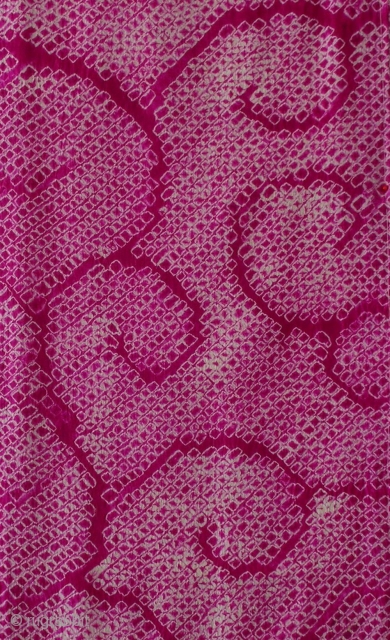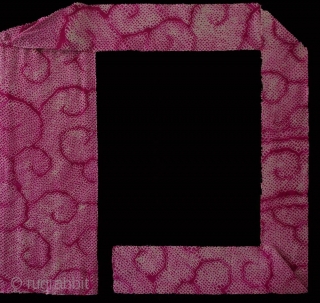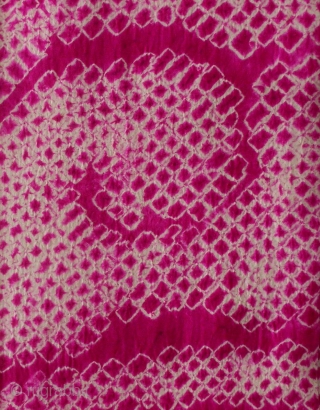Back
Silk Shibori Obi, Japan, early Showa (circa 1930), cm 315x32. The ‘obi’ is a sash for traditional Japanese dresses, and a part of kimono outfits. This one is a so-called ‘nagoya obi’, a shorted than usual obi that was mostly used by young, unmarried women. Out of the ordinary is the pattern of scrolling vines decorating this smart sash, obtained via a’shibori’ technique. The common English translation of the Japanese word shibori is "tie-dye"; however, a more accurate translation is "shaped-resist dyeing," which describes the inherent patterning process of manipulating the two-dimensional cloth surface into three-dimensional shapes before compressing them to dye. The cloth itself, has a very soft touch and has been dyed in a rich purple. Condition is rather good, with tiny scattered age patina spots and little smudges, plus a stain on the reverse side of wider end. These do not feature prominently, though, and the overall impression is that of a lovely and visually imposing item. Recommended.
price:
SOLD
- Home
- Antique Rugs by Region
- Category
- Profiles
- Post Items Free
- Albums
- Benaki Museum of Islamic Art
- Budapest: Ottoman Carpets
- Gulbenkian Museum
- Islamic Carpets. Brooklyn
- Islamic Textiles. Brooklyn
- Konya Museum: Rugs
- MKG, Hamburg
- MMA: Caucasian Carpets
- MMA: Mamluk Carpets
- MMA: Mughal Indian Carpets
- MMA: Ottoman Carpets
- MMA: Safavid Persian Carpets
- MMA: Turkmen Rugs
- McCoy Jones Kilims
- Ottoman textiles. Met
- Philadelphia Museum
- Rugs and Carpets: Berlin
- Seljuqs at the Met
- TIEM, Istanbul: Carpets
- V&A: Classical Carpets
- Vakiflar Carpets: Istanbul
- Baluch Rugs: Indianapolis
- Gallery Exhibitions
- Jaf an Exhibition
- Alberto Levi Gallery
- Andean Textile
- Christie's London: 2016
- Francesca Galloway
- HALI at 40
- ICOC Washington, DC 2018
- Jajims of the Shahsavan
- London Islamic Week April, 2018
- Mongolian Felts
- Navajo Rugs: JB Moore
- Persian Piled Weavings
- SF Tribal & Textile Art Show 2020
- SF Tribal 2019
- Sotheby's: C. Alexander
- Turkish Prayer Rugs
- Turkmen Main Carpets ICOC 2007









